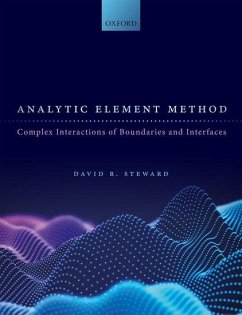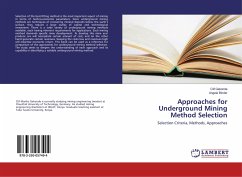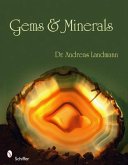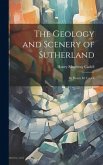- Gebundenes Buch
- Merkliste
- Auf die Merkliste
- Bewerten Bewerten
- Teilen
- Produkt teilen
- Produkterinnerung
- Produkterinnerung
"Analytic Element Method" (AEM) assembles a broad range of mathematical and computational approaches to solve important problems in engineering and science.
Andere Kunden interessierten sich auch für
![Carbonate Sedimentology Carbonate Sedimentology]() Maurice E TuckerCarbonate Sedimentology174,99 €
Maurice E TuckerCarbonate Sedimentology174,99 €![Carbonate Mud-Mounds Carbonate Mud-Mounds]() Carbonate Mud-Mounds177,99 €
Carbonate Mud-Mounds177,99 €![Approaches for Underground Mining Method Selection Approaches for Underground Mining Method Selection]() Clif GekondeApproaches for Underground Mining Method Selection24,99 €
Clif GekondeApproaches for Underground Mining Method Selection24,99 €![A System of Mineralogy, Volume 1 A System of Mineralogy, Volume 1]() Robert JamesonA System of Mineralogy, Volume 141,99 €
Robert JamesonA System of Mineralogy, Volume 141,99 €![Gems & Minerals Gems & Minerals]() Andreas LandmannGems & Minerals23,99 €
Andreas LandmannGems & Minerals23,99 €![The Geology and Scenery of Sutherland The Geology and Scenery of Sutherland]() Henry Mowbray CadellThe Geology and Scenery of Sutherland29,99 €
Henry Mowbray CadellThe Geology and Scenery of Sutherland29,99 €![The Big Book of Bling: Ritzy Rocks, Extravagant Animals, Sparkling Science, and More! The Big Book of Bling: Ritzy Rocks, Extravagant Animals, Sparkling Science, and More!]() Rose DavidsonThe Big Book of Bling: Ritzy Rocks, Extravagant Animals, Sparkling Science, and More!16,99 €
Rose DavidsonThe Big Book of Bling: Ritzy Rocks, Extravagant Animals, Sparkling Science, and More!16,99 €-
-
-
"Analytic Element Method" (AEM) assembles a broad range of mathematical and computational approaches to solve important problems in engineering and science.
Produktdetails
- Produktdetails
- Verlag: Oxford University Press
- Seitenzahl: 338
- Erscheinungstermin: 17. November 2020
- Englisch
- Abmessung: 249mm x 193mm x 23mm
- Gewicht: 839g
- ISBN-13: 9780198856788
- ISBN-10: 0198856784
- Artikelnr.: 59184051
- Herstellerkennzeichnung
- Libri GmbH
- Europaallee 1
- 36244 Bad Hersfeld
- gpsr@libri.de
- Verlag: Oxford University Press
- Seitenzahl: 338
- Erscheinungstermin: 17. November 2020
- Englisch
- Abmessung: 249mm x 193mm x 23mm
- Gewicht: 839g
- ISBN-13: 9780198856788
- ISBN-10: 0198856784
- Artikelnr.: 59184051
- Herstellerkennzeichnung
- Libri GmbH
- Europaallee 1
- 36244 Bad Hersfeld
- gpsr@libri.de
Professor David R. Steward is chair of the Department of Civil and Environmental Engineering at North Dakota State University and holds the Walter B. Booth Distinguished Professorship. Dr. Steward teaches courses in groundwater flow, water resources, hydraulics and engineering mathematics. He is licensed as a Professional Engineer (North Dakota and Minnesota) and a Professional Geoscientist (Texas), and is a Fellow of the American Society of Civil Engineers.
Analytic Element Method across Fields of Study
1: Philosophical Perspective
2: Studies of Flow and Conduction
3: Studies of Periodic Waves
4: Studies of Deformation by Forces
Further Reading
Foundation of the Analytic Element Method
5: The Analytical Element Method Paradigm
6: Solving Systems of Equations to Match Boundary Conditions
7: Consistent Notation for Boundary Value Problems
Further Reading
Analytic Elements from Complex Functions
8: Point Elements in a Uniform Vector Field
9: Domains with Circular Boundaries
10: Ellipse Elements with Continuity Conditions
11: Slit Element Formulation: Courant's Sewing Theorem with Circle Elements
12: Circular Arcs and Joukowsky's Wing
13: Complex Vector Fields with Divergence and Curl
14: Biharmonic Equation and the Kolosov Formulas
Further Reading
Analytic Elements from Separation of Variables
15: Overview
16: Separation for One-Dimensional Problems
17: Separation in Cartesian Coordinates
18: Separation in Circular-Cylindrical Coordinates
19: Separation in Spherical Coordinates
20: Separation in Spheroidal Coordinates
Further Reading
Analytic Elements from Singular Integral Equations
21: Formulation of Singular Integral Equations
22: Double Layer Elements
23: Single Layer Elements
24: Simpler Far-Field Representation
25: Polygon Elements
26: Curvilinear Elements
27: Three-Dimensional Vector Fields
Further Reading
A List of Symbols
B Solutions to Selected Problem Sets
References
Index
1: Philosophical Perspective
2: Studies of Flow and Conduction
3: Studies of Periodic Waves
4: Studies of Deformation by Forces
Further Reading
Foundation of the Analytic Element Method
5: The Analytical Element Method Paradigm
6: Solving Systems of Equations to Match Boundary Conditions
7: Consistent Notation for Boundary Value Problems
Further Reading
Analytic Elements from Complex Functions
8: Point Elements in a Uniform Vector Field
9: Domains with Circular Boundaries
10: Ellipse Elements with Continuity Conditions
11: Slit Element Formulation: Courant's Sewing Theorem with Circle Elements
12: Circular Arcs and Joukowsky's Wing
13: Complex Vector Fields with Divergence and Curl
14: Biharmonic Equation and the Kolosov Formulas
Further Reading
Analytic Elements from Separation of Variables
15: Overview
16: Separation for One-Dimensional Problems
17: Separation in Cartesian Coordinates
18: Separation in Circular-Cylindrical Coordinates
19: Separation in Spherical Coordinates
20: Separation in Spheroidal Coordinates
Further Reading
Analytic Elements from Singular Integral Equations
21: Formulation of Singular Integral Equations
22: Double Layer Elements
23: Single Layer Elements
24: Simpler Far-Field Representation
25: Polygon Elements
26: Curvilinear Elements
27: Three-Dimensional Vector Fields
Further Reading
A List of Symbols
B Solutions to Selected Problem Sets
References
Index
Analytic Element Method across Fields of Study
1: Philosophical Perspective
2: Studies of Flow and Conduction
3: Studies of Periodic Waves
4: Studies of Deformation by Forces
Further Reading
Foundation of the Analytic Element Method
5: The Analytical Element Method Paradigm
6: Solving Systems of Equations to Match Boundary Conditions
7: Consistent Notation for Boundary Value Problems
Further Reading
Analytic Elements from Complex Functions
8: Point Elements in a Uniform Vector Field
9: Domains with Circular Boundaries
10: Ellipse Elements with Continuity Conditions
11: Slit Element Formulation: Courant's Sewing Theorem with Circle Elements
12: Circular Arcs and Joukowsky's Wing
13: Complex Vector Fields with Divergence and Curl
14: Biharmonic Equation and the Kolosov Formulas
Further Reading
Analytic Elements from Separation of Variables
15: Overview
16: Separation for One-Dimensional Problems
17: Separation in Cartesian Coordinates
18: Separation in Circular-Cylindrical Coordinates
19: Separation in Spherical Coordinates
20: Separation in Spheroidal Coordinates
Further Reading
Analytic Elements from Singular Integral Equations
21: Formulation of Singular Integral Equations
22: Double Layer Elements
23: Single Layer Elements
24: Simpler Far-Field Representation
25: Polygon Elements
26: Curvilinear Elements
27: Three-Dimensional Vector Fields
Further Reading
A List of Symbols
B Solutions to Selected Problem Sets
References
Index
1: Philosophical Perspective
2: Studies of Flow and Conduction
3: Studies of Periodic Waves
4: Studies of Deformation by Forces
Further Reading
Foundation of the Analytic Element Method
5: The Analytical Element Method Paradigm
6: Solving Systems of Equations to Match Boundary Conditions
7: Consistent Notation for Boundary Value Problems
Further Reading
Analytic Elements from Complex Functions
8: Point Elements in a Uniform Vector Field
9: Domains with Circular Boundaries
10: Ellipse Elements with Continuity Conditions
11: Slit Element Formulation: Courant's Sewing Theorem with Circle Elements
12: Circular Arcs and Joukowsky's Wing
13: Complex Vector Fields with Divergence and Curl
14: Biharmonic Equation and the Kolosov Formulas
Further Reading
Analytic Elements from Separation of Variables
15: Overview
16: Separation for One-Dimensional Problems
17: Separation in Cartesian Coordinates
18: Separation in Circular-Cylindrical Coordinates
19: Separation in Spherical Coordinates
20: Separation in Spheroidal Coordinates
Further Reading
Analytic Elements from Singular Integral Equations
21: Formulation of Singular Integral Equations
22: Double Layer Elements
23: Single Layer Elements
24: Simpler Far-Field Representation
25: Polygon Elements
26: Curvilinear Elements
27: Three-Dimensional Vector Fields
Further Reading
A List of Symbols
B Solutions to Selected Problem Sets
References
Index








